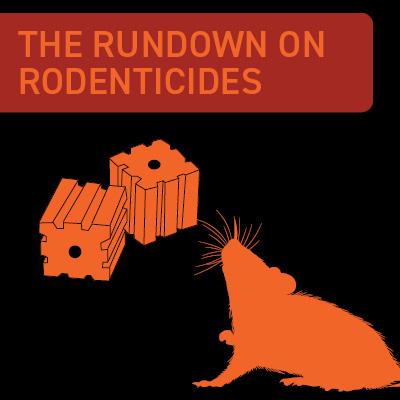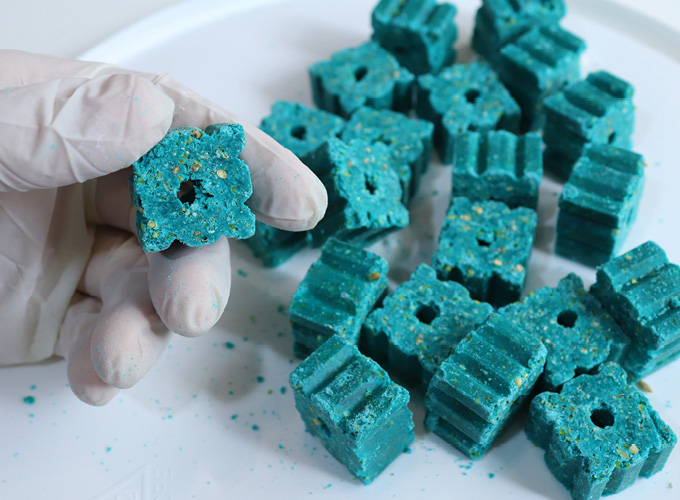
We all know just how destructive rodents can be to the structure of our homes. They also pose a serious health risk, as mice and rats can spread more than 35 diseases to humans. Their health risk and destructive nature make it essential that infestations are treated by a professional. One of the most popular treatments for this pest is rodenticides. This form of treatment has been used and trusted in the pest management industry for decades. Rodenticides allow technicians to treat infestations quickly and efficiently. To ensure a successful treatment, keep reading as we explore some of our product options.
What types of rodenticides are available today?
There are many different rodenticides available on the market today. While each product has the same outcome, some versions may be more lethal while others require multiple doses. Many are toxic when inhaled or when they come in contact with the skin, while others are only lethal when ingested. Treating a site requires a vast knowledge of rodenticides and choosing which bait is right for your client is an important step of the process. Rodenticides' various active ingredients can vary from state to state, making continued product education essential.
Anticoagulants vs. Non-Anticoagulants
Anticoagulants
Each type of rodenticide falls into two categories: anticoagulants or non-anticoagulants. Anticoagulants work by stopping a special enzyme that allows rodents’ bodies to cycle Vitamin K. When this enzyme is disrupted, they lose their ability to clot blood and internal bleeding ensues. Common anticoagulants are bromadiolone, chlorophacinone, difethialone, brodifacoum, and warfarin. Some anticoagulants require multiple doses over several days for the poison to work, including, warfarin, chlorophacinone, and diphacinone. Other anticoagulants are considered more toxic and only require one dose, such as brodifacoum, bromadiolone, and difethialone. These single-does anticoagulants work by binding more tightly to the enzyme that helps clot blood and they also interfere with other steps in the process. Anticoagulants have been on the market for many years, and their quick results often make them the first choice for professionals.
Non-Anticoagulants
Non-anticoagulants work differently than anticoagulants, but they still give pest control professionals the results they need. Some common types of non-anticoagulants are bromethalin, cholecalciferol, zinc phosphide, and strychnine. Bromethalin stops the cells' central nervous system from producing energy. This causes the nerve cells to swell and puts pressure on the brain which leads to death. Cholecalciferol, also known as vitamin D3, delivers fatal doses of calcium into the blood. When zinc phosphide is in the presence of water and acid, it changes into toxic phosphine gas. This gas blocks the body's cells from producing energy, causing them to die. Strychnine comes from the seeds of plants and causes severe muscle spasms that lead to death. Strychnine is heavily restricted and can only be used below ground by certified applicators. All of these non-anticoagulants are tried and tested by professionals in the industry, and deliver the results you expect from Target Speciality Products.
Rodenticide Guidelines from the EPA
Over the last few years, stricter regulations have been put in place for the pest control industry. Guidelines such as Assembly Bill 1788 limit access to popular active ingredients in the state of California. In addition, new EPA regulations have been proposed to restrict the use of rodenticides in the U.S. This would classify many rodenticides as restricted use pesticides and fundamentally change how pest control is conducted. Although these regulations are currently not in effect, we can expect to see changes in industry regulations over the next 15 years.

Safety Precautions to Take When Working with Rodenticides
Pest control professionals working with rodenticides must follow safety precautions. While handling the bait, proper PPE must be worn at all times. This includes gloves, eye protection, long-sleeved clothing, and closed-toe shoes. Always store rodenticides in a cool, dry place that is out of reach from animals and children. Extra precautions should be taken to ensure non-targeted animals do not come in contact with the poison. Rodents and excess rodenticide should be disposed of according to EPA guidelines. For additional information and instructions, please refer to the product label.
Professional-grade Pest Management
Follow-up inspections should always be performed when using rodenticides. Rodent control can require several changes of strategy before the infestation is eliminated. In many cases, it can take a few weeks for all the rodents in the colony to take the bait. After the treatment is successful, always go back and make sure there is no trace of the bait left on site.
Any effective rodent control program relies on products trusted and tested by industry professionals. Understanding the science behind the products we use helps us keep rodent infestations at bay. With the proper training and education, we can continue to provide our clients with the best care in pest management.
Browse our complete line of rodenticides or contact our sales representatives for more information.
To learn more about rodents, check out some of our other articles:

